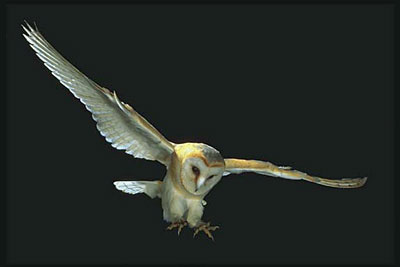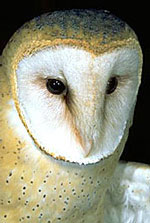Omens
RAT. — A rat running in front of you means
treacherous servants and losses through enemies.
Omens and Meanings
How have omens been regarded in the past? An appeal to anciency is usually a safeguard for a basis. It is found that most of the earliest records are now subsisting. See official guide to the British Museum. Babylonian and Assyrian antiquities, table case H. Nineveh Gallery, the following appears:
"By means of omen tablets the Babylonian and Assyrian priests from time immemorial predicted events which they believed would happen in the near or in the remote future. They deduced these omens from the appearance and actions of animals, birds, fish, and reptiles; from the appearance of the entrails of sacrificial victims; from the appearance and condition of human and animal offspring at birth; from the state and condition of various members of the human body."
In India, where the records of the early ages of civilization go back hundreds of years, omens are considered of great importance.
Later, in Greece, the home of the greatest and highest culture and civilization, we find, too, omens regarded very seriously, while to-day there are vast numbers of persons of intellect, the world over, who place reliance upon omens.
That there is some good ground for belief in some omens seems indisputable. Whether this has arisen as the result of experience, by the following of some particular event close upon the heels of signs observed, or whether it has been an intuitive science, in which provision has been used to afford an interpretation, is not quite clear. It seems idle to attempt to dismiss the whole thing as mere superstition, wild guessing, or abject credulity, as some try to do, with astrology and alchemy also, and other occult sciences; the fact remains that omens have, in numberless instances, given good warnings.
To say that these are just coincidences is to beg the question. For the universe is governed by law. Things happen because they must, not because they may. There is no such thing as accident or coincidence. We may not be able to see the steps and the connections. But they are there all the same.
In years gone by many signs were deduced from the symptoms of sick men; the events or actions of a man's life; dreams and visions; the appearance of a man's shadow; from fire, flame, light, or smoke; the state and condition of cities and their streets, of fields, marshes, rivers, and lands. From the appearances of the stars and planets, of eclipses, meteors, shooting stars, the direction of winds, the form of clouds, thunder and lightning and other weather incidents, they were able to forecast happenings. A number of tablets are devoted to these prophecies.
It is conceivable that many of these omens should have found their way into Greece, and it is not unreasonable to believe that India may have derived her knowledge of omens from Babylonia; or it may have been the other way about. The greatest of scholars are divided in their opinions as to which really is the earlier civilization.
The point to be made here is that in all parts of the world—in quarters where we may be certain that no trace of Grecian, Indian, or Babylonian science or civilization has appeared—there are to be found systems of prophecies by omens.
It may be accounted for in two ways. One that in all races as they grow up, so to speak, there is the same course of evolution of ideas and superstition which to many appears childish. The other explanation seems to be the more reasonable one, if we believe, as we are forced to do, that omens do foretell—that all peoples, all races, accumulate a record, oral or otherwise, of things which have happened more or less connected with things which seemed to indicate them. In course of time this knowledge appears to consolidate. It gets generally accepted as true. And then it is handed on from generation to generation. Often with the passage of years it gets twisted and a new meaning taken out of it altogether different from the original.
It would be difficult to attempt to classify omens. Many books have been written on the subject and more yet to be written of the beliefs of the various races. The best that can be offered here is a selection from one or other of the varied sources. In Greece sneezing was a good omen and was considered a proof of the truth of what was said at the moment by the sneezer.
A tingling in the hand denoted the near handling of money, a ringing in the ears that news will soon be received. The number of sneezes then became a sign for more definite results. The hand which tingled, either right or left, indicated whether it were to be paid or received. The particular ear affected was held to indicate good or evil news. Other involuntary movements of the body were also considered of prime importance.
Many omens are derived from the observation of various substances dropped into a bowl of water. In Babylon oil was used. To-day in various countries melted lead, wax, or the white of an egg, is used. From the shapes which result, the trade or occupation of a future husband, the luck for the year, and so on, are deduced in the folk practices of modern Europe. Finns use stearine and melted lead, Magyars lead, Russians wax, Danes lead and egg, and the northern counties of England egg, wax and oil.
Bird omens were the subject of very serious study in Greece. It has been thought that this was because in the early mythology of Greece some of their gods and goddesses were believed to have been birds. Birds, therefore, were particularly sacred, and their appearances and movements were of profound significance. The principal birds for signs were the raven, the crow, the heron, wren, dove, woodpecker, and kingfisher, and all the birds of prey, such as the hawk, eagle, or vulture, which the ancients classed together (W. R. Halliday, "Greek Divination"). Many curious instances, which were fulfilled, of bird omens are related in "The Other World," by Rev. F. Lee. A number of families have traditions about the appearance of a white bird in particular.
"In the ancient family of Ferrers, of Chartley Park, in Staffordshire, a herd of wild cattle is preserved. A tradition arose in the time of Henry III. that the birth of a party-coloured calf is a sure omen of death, within the same year, to a member of the Lord Ferrers family. By a noticeable coincidence, a calf of this description has been born whenever a death has happened of late years in this noble family." (Staffordshire Chronicle, July, 1835). The falling of a picture or a statue or bust of the individual is usually regarded as an evil omen. Many cases are cited where this has been soon followed by the death of the person.
It would be easy to multiply instances of this sort: of personal omen or warning. The history and traditions of our great families are saturated with it. The predictions and omens relating to certain well known families, and others, recur at once; and from these it may be inferred that beneath the more popular beliefs there is enough fire and truth to justify the smoke that is produced, and to reward some of the faith that is placed in the modern dreambooks and the books of fate and the interpretations of omens.







